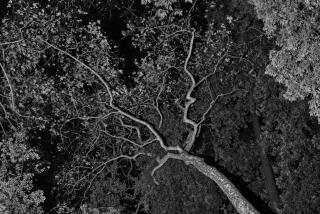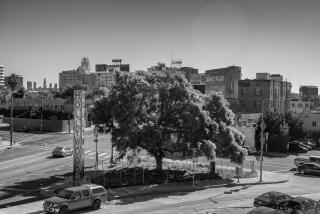Ulmus parvifoliaChinese elmMedium-large evergreen or deciduous...
- Share via
Ulmus parvifolia
Chinese elm
Medium-large evergreen or deciduous tree with graceful weeping habit
It doesn’t look anything like the American elm: no upswept vase shape, no huge limb spread that could shade three houses at once, no stately, imposing presence.
Where the American elm can be a towering 100 feet in height, the Chinese elm won’t go much beyond 60--but it gets there faster, often achieving 30 feet in just five years.
The Chinese elm is also an exceptionally beautiful tree: Gray-brown bark peels off in patches as the tree reaches maturity, resembling California sycamore or eucalyptus bark, and long, drooping branches of tiny, dark green, serrated leaflets are as graceful as a willow’s.
It doesn’t provide a lot of shade--it’s neither dense nor very wide--but it makes a lovely dappled shadow on a stucco building and will at least shade a patio in the heat of the day.
Resistant to Dutch Elm Disease
And the tree is resistant to Dutch elm disease. Not immune--just resistant. Fortunately, this miserable fungus is not a problem in Southern California because the spores, carried by the elm beetle, dry up before they reach their destination.
The Chinese elm keeps its leaves all year in Southern California’s benevolent lowland climate, but in the colder mountains and high deserts, the leaves will drop after turning a handsome yellow to purple-red. There are also clusters of red fruits in the winter--something to admire in every season.
And this tree is no sissy; it can take drought, alkaline soil, severe heat and soil compaction, making it one fine street tree. Its branches are strong, unlike the American elm, whose brittle branches often end up on (or through) a roof.
Careful Pruning Needed
The Chinese elm does need careful pruning, though, so it won’t get rangy and unkempt. I was once horrified to see a row of them hacked to bits by an energetic tree pruner; only stumps of branches were left and I was sure the trees would collapse. Next year, they had sprouted new branchlets; these became branches, and in two years the trees looked full and healthy again.
The most common variety of Ulmus parvifolia is “Sempervirens”; “Brea” and “Drake” have a more upright habit and “True Green,” described as “more evergreen” in Monrovia Nursery’s wholesale catalogue, has small, very shiny leaves. The trees are available in 1-gallon through 30-inch containers and should be easy to find or order at local nurseries; the patient pioneer might want to grow a few from seed.






